Chinese plumbago Ceratostigma willmottianum

ABOUT
Chinese plumbago is a deciduous perennial shrub known for its distinctive and attractive features. It's appearance is characterized by deep green, glossy leaves that are oval to oblong in shape with pointed tips. These leaves often turn to striking shades of red or burgundy in the fall, adding a splash of color to the garden landscape. The plant is adorned by clusters of brilliant, cobalt-blue to purplish-blue flowers, which have a tubular shape with spreading petals and a contrasting red calyx. The vivid blossoms come into flourish late in the summer and continue into the fall, offering a late season nectar source for pollinators such as bees and butterflies. The stems of Chinese plumbago start out green but as they mature, they become woody with a reddish-brown color adding another layer of interest to its appearance. Its overall form is mounding to spreading, which creates a lush and full look in garden beds or when used as a border plant. Apart from its floral display and autumn leaf coloration, Chinese plumbago's overall texture, from its leaves to its stems, adds a fine to medium visual interest that complements other plants in a mixed garden setting. The attractive features of the Chinese plumbago make it a popular choice for gardeners looking to enhance their landscape with long-lasting color and varied textures.
About this plant
 Names
NamesFamily
Plumbaginaceae
Synonyms
Chinese Plumbago, Willmott's Plumbago, Hardy Blue-flowered Leadwort
Common names
Plumbago willmottiana
 Toxicity
ToxicityTo humans
The plant commonly known as Plumbago is not widely recognized for its toxicity to humans. There is little to no evidence suggesting that Plumbago is poisonous upon ingestion. Therefore, there are no well-documented symptoms of poisoning or significant consequences associated with ingesting any part of this plant.
To pets
Plumbago is not known to be toxic to pets either. There is a lack of information indicating that this plant poses a risk if ingested by pets such as dogs or cats. Consequently, there are no specific symptoms of poisoning or adverse effects exclusively linked to the ingestion of Plumbago by pets. However, as with any non-food plant, ingestion can sometimes cause mild stomach upset in some animals.
 Characteristics
CharacteristicsLife cycle
Perennials
Foliage type
Deciduous
Color of leaves
Green
Flower color
Blue
Height
3 feet (0.91 meters)
Spread
3 feet (0.91 meters)
Plant type
Shrub
Hardiness zones
6
Native area
China
Benefits
 General Benefits
General Benefits- Aesthetic Appeal: Ceratostigma willmottianum, commonly known as Chinese plumbago, adds vibrant color to gardens with its deep blue flowers and reddish-bronze foliage in the fall.
- Ease of Care: Chinese plumbago is relatively low-maintenance, requiring minimal pruning and being drought-tolerant once established.
- Attracts Pollinators: The bright flowers of the Chinese plumbago attract bees and butterflies, which are essential for pollination.
- Seasonal Interest: This plant provides visual interest throughout multiple seasons with its flowers in summer and colorful foliage in autumn.
- Versatility in Landscaping: Chinese plumbago can be used as a groundcover, in rock gardens, or as part of border plantings, offering flexibility in garden design.
- Drought Resistance: Once established, Chinese plumbago is quite resistant to drought, making it suitable for xeriscaping or in areas with water restrictions.
- Erosion Control: Its root system can help stabilize soil, which is beneficial for controlling erosion on slopes or banks.
- Winter Hardy: Chinese plumbago is relatively winter hardy, able to withstand colder temperatures without significant damage.
- Wildlife Habitat: This plant can provide cover and habitat for small wildlife, particularly in larger garden settings.
 Medical Properties
Medical PropertiesThis plant is not used for medical purposes.
 Air-purifying Qualities
Air-purifying QualitiesThis plant is not specifically known for air purifying qualities.
 Other Uses
Other Uses- Ceratostigma willmottianum, commonly known as Chinese plumbago, can be used as a natural dye for fabrics, yielding various shades of blue depending on the mordant used.
- The plant's striking blue flowers are often used in floral arrangements to provide a unique splash of color that is less common in traditional flower displays.
- Chinese plumbago can be employed in landscape design to stabilize slopes and banks, as its root system helps control erosion.
- In theme gardens, such as 'blue gardens' where a monochromatic theme is desired, Chinese plumbago serves as an excellent choice for its vivid blue flowers.
- Its dried stems and flowers can be used in potpourri mixtures, contributing not only color but also a lightly spicy fragrance when dried properly.
- The plant can be used in butterfly gardens to attract pollinators, as its flowers are a nectar source for various butterfly species.
- Chinese plumbago is used as ground cover in large garden spaces due to its spreading habit, offering an aesthetically pleasing and low-maintenance green cover.
- In artistic crafts, the flowers of Chinese plumbago can be pressed and used in creating botanical art pieces or decorative bookmarks.
- The plant can be integrated into educational gardens where students learn about perennial life cycles and pollination strategies specific to the species.
- During winter, when the leaves turn a reddish-bronze color, Chinese plumbago can be used to add winter interest to gardens that otherwise lack color during the colder months.
Interesting Facts
 Feng Shui
Feng ShuiThe plant Ceratostigma is not used in Feng Shui practice.
 Zodiac Sign Compitability
Zodiac Sign CompitabilityThe plant Ceratostigma is not used in astrology practice.
 Plant Symbolism
Plant Symbolism- Resilience: Ceratostigma willmottianum, commonly known as Chinese plumbago, often represents resilience because it can adapt to various soil types and withstand neglect once established.
- Renewal: The plant's ability to recover after being cut back or damaged is often associated with the theme of renewal and the possibility of a fresh start.
- Vibrancy: With its bright blue flowers, Chinese plumbago symbolizes vibrancy and cheer, adding a splash of color to gardens even in late summer.
- Loyalty: Blue is a color often linked to loyalty, and the enduring blooms of Chinese plumbago may be interpreted as a symbol of steadfastness in relationships or beliefs.
 Water
WaterThe Chinese Plumbago should be watered regularly, ensuring the soil is kept moist but not waterlogged. During the growing season, water the plant approximately once a week with about 1 gallon of water, depending on the weather and soil drainage. As the plant becomes established, it is moderately drought tolerant and may require less frequent watering. During the winter months, reduce watering to every two to three weeks or when the soil feels dry to the touch. It’s essential to avoid overwatering as this can lead to root rot.
 Light
LightChinese Plumbago thrives in full sun to partial shade. Ideally, it should receive at least four to six hours of sunlight daily. Planting it in a spot where it gets morning sun and afternoon shade is beneficial, particularly in regions with very hot summer weather. However, the plant is adaptable and can also do well in a brighter, dappled shade area.
 Temperature
TemperatureChinese Plumbago prefers temperatures between 50°F and 86°F. It can survive minimum temperatures down to about 20°F but is not frost-tolerant for extended periods. The ideal temperature range is from 60°F to 75°F during the growing season. Keeping the plant in conditions within this range will promote healthy growth and flowering.
 Pruning
PruningPrune Chinese Plumbago in late winter or early spring to remove dead or damaged wood and to shape the plant. Pruning encourages bushier growth and more profuse flowering. It is typically done once a year, but light pruning can be done throughout the growing season to maintain the desired shape and size. The best time for major pruning is before new growth begins.
 Cleaning
CleaningAs needed
 Soil
SoilChinese Plumbago thrives in well-draining soil with a pH ranging from slightly acidic to neutral (pH 5.5-7.5). A mix containing loam, peat, and sharp sand or perlite is ideal to ensure good drainage and aeration.
 Repotting
RepottingChinese Plumbago should be repotted every 2-3 years or when it has outgrown its current pot to promote healthy growth and prevent root-bound conditions.
 Humidity & Misting
Humidity & MistingChinese Plumbago prefers moderate humidity levels but is adaptable and can tolerate lower humidity environments commonly found in home settings.
 Suitable locations
Suitable locationsIndoor
Ensure bright light, well-draining soil, and moderate water.
Outdoor
Plant in full sun to partial shade in well-draining soil.
Hardiness zone
6-9 USDA
 Life cycle
Life cycleThe Chinese plumbago (Ceratostigma willmottianum) begins its life cycle as a seed, typically germinating in spring under favorable moisture and temperature conditions. The seedlings develop into small shrubs, establishing a root system and beginning to produce leaves. As the plant matures, it undergoes vegetative growth each spring and summer, with foliage emerging from woody stems. From late summer to early autumn, the Chinese plumbago produces vibrant blue flowers that attract pollinators, thus facilitating cross-pollination. After flowering, the plant sets seed within fruit that dry and release seeds for propagation. In the winter months, the Chinese plumbago may die back to the ground in colder climates, entering a period of dormancy before regrowing the following spring.
 Propogation
PropogationPropogation time
Late summer
Ceratostigma willmottianum, commonly known as Chinese plumbago, is most commonly propagated by semi-hardwood cuttings taken in late summer. To propagate, one should select healthy stems and cut a section that is about 4 to 6 inches (10 to 15 cm) long. The leaves on the lower half of the cutting should be removed, and the cut end dipped in rooting hormone for better root development. The cutting is then planted in a moist, well-draining potting mix, while ensuring that at least two sets of leaf nodes are buried within the soil. A clear plastic bag or a propagator can be used to cover the planted cutting to maintain high humidity. The cuttings should be kept in indirect light and should not be allowed to dry out. Roots usually develop within a few weeks, after which the new plants can be gradually acclimated to outside conditions and finally planted out the following spring.
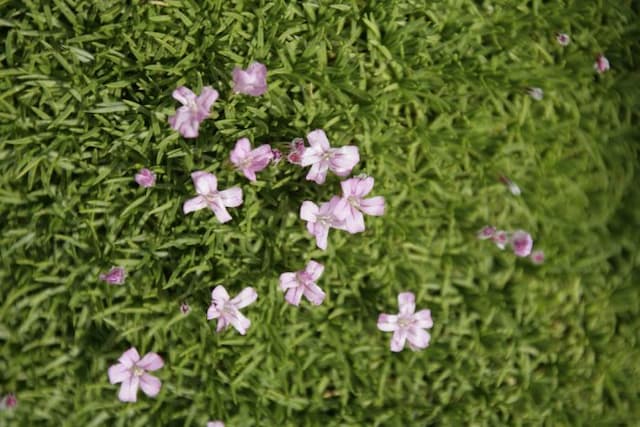
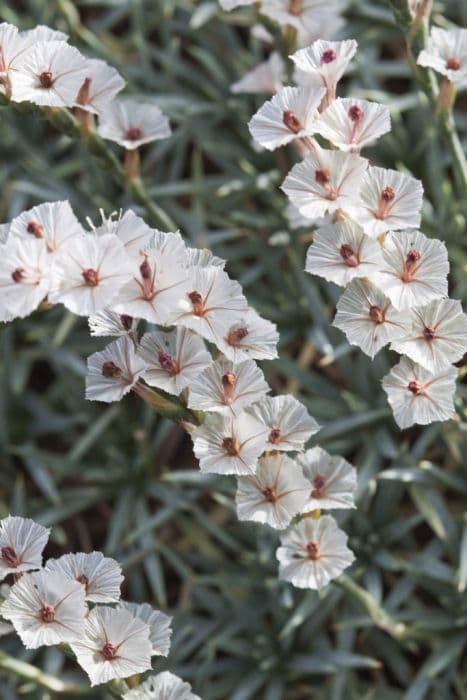
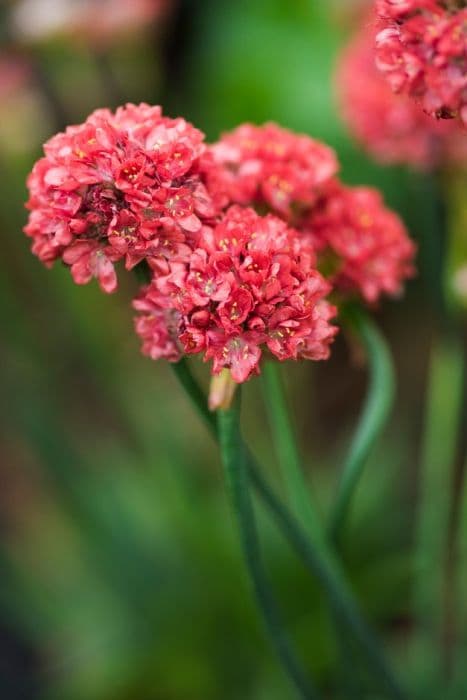
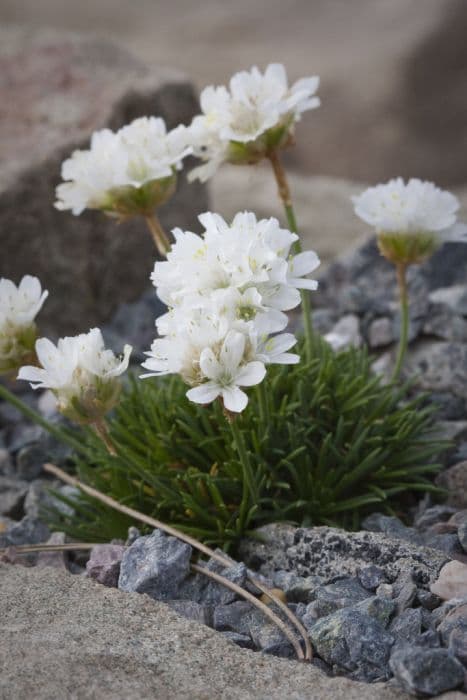
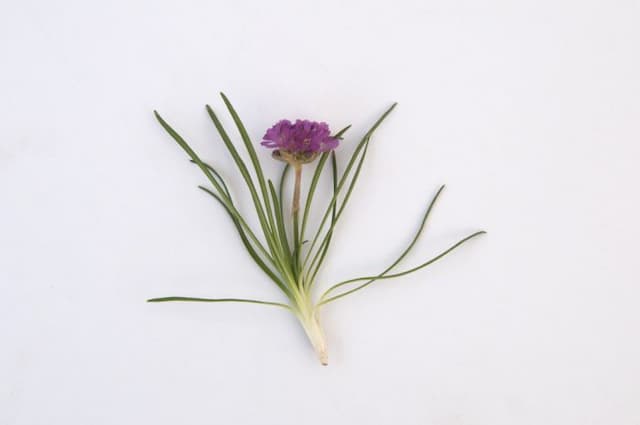



![Chinese plumbago [Forest Blue]](/_next/image?url=https%3A%2F%2Fplants-admin.emdemapps.com%2Fimages%2Fplants%2F%2Fimages%2F604b5c4db911f.png&w=640&q=75)
